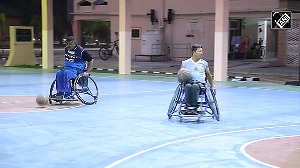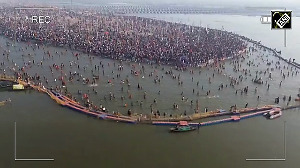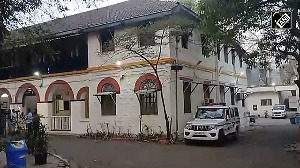The flames that flared up around Michael Schumacher's Ferrari in Austria last weekend were put out soon enough, but concerns about the safety of mid-race refuelling will smoulder on.
Although Ferrari and Formula One's rulers defended procedures, the pitstop fire provided the main talking point at Spielberg after the world champion had coolly taken his third win in a row.
"It's business as usual with regard to refuelling," said an International Automobile Federation spokesman. "The FIA sees no reason to review refuelling pitstops."
Ever since refuelling was reintroduced to liven up 'the show' in 1994, a season that coincidentally saw the biggest pitlane blaze to date, there have been misgivings.
Some have argued that, in a sport constantly striving to improve safety in the face of ever-present danger, pumping fuel into a hot car at 12 litres per second in a busy pitlane constitutes an entirely avoidable risk.
Others point out that funnelling a field of cars on full fuel tanks into some of Formula One's more perilous first corners is hardly a safe alternative.
They also say that pitstops add to the excitement, undeniable on Sunday, by bringing changes to the lead and introducing another strategic element to the race.
Risk Factor
The rigs, standard to all Formula One teams to the specification of the FIA, were designed for the aviation industry.
They look to be here to stay for the foreseeable future, not least on technical grounds because cars are now designed with refuelling in mind and have smaller tanks.
Formula One supremo Bernie Ecclestone appears to be comfortable with the current situation.
"I'm as relieved as anyone that Michael escaped unscathed but it only went to underline just how effectively F1 copes with the spectacle of refuelling," he told Britain's Daily Mail newspaper this week.
"People talk of risks," he added. "Do they not think that's part of this sport? It is the risk factor that helps to give motor racing its appeal to spectators and drivers alike."
Ferrari technical director Ross Brawn said those risks would not be greatly diminished by cars racing with 220 to 230 litres of fuel on board.
"I don't think it's a clear-cut argument and I don't think what we saw today was a crucial event in the decision whether we carry on with the refuelling or not," he said.
Fire is always a driver's worst nightmare, a killer in the days when there was less protective clothing and safety measures were more rudimentary.
"If there is to be a fire, then better in the pitlane where it can be dealt with efficiently and expertly than somewhere out on the track," said FIA president Max Mosley.
Flash Fires
Schumacher's flare-up was traced by Ferrari on Wednesday to a damaged seal on the fuel rig.
By Formula One standards, it was minor.
But Sunday's incident was still the first blaze during refuelling at a pitstop since Eddie Irvine's Jordan caught fire at Spa-Francorchamps in the 1995 Belgian Grand Prix.
The year before that, Jos Verstappen's Benetton was engulfed in flames in the most spectacular conflagration to date. The Dutch driver, now with Minardi, and several mechanics were treated for minor burns.
A fuel filter was found to have been removed on that occasion but the team escaped punishment although pressurised fuel delivery was banned and a failsafe cut-out mechanism added to the rigs.
The fear of fire remains, however.
"It's the one thing that people really do have grave concerns about," Jock Clear, Jacques Villeneuve's engineer at BAR, told Motorsport News this week.
"We all remember what happened in Hockenheim in 1994 -- and if something can happen it will happen."








 © 2025
© 2025